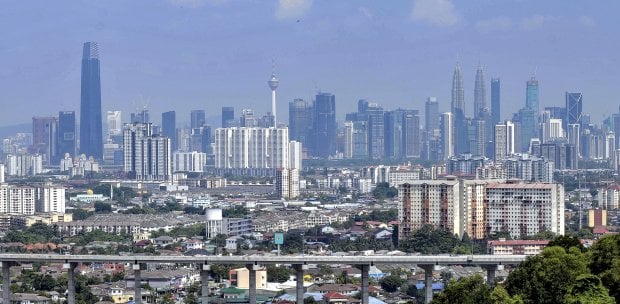In the intricate dance of global economics, the notion of "Twin Deficits" emerges as a nuanced ballet featuring two key players: the budget deficit and the trade deficit.
Picture a government spending more than it gathers in taxes, twirling alongside a nation indulging in a penchant for imports over exports. The choreography of fiscal policy and international trade, it seems, intertwines in this delicate performance.
The Twin Deficits hypothesis postulates a connection between a government's fiscal choices, manifested in the budget deficit, and its external trade dynamics, embodied in the trade deficit.
As the government's deficit-spurred higher interest rates beckon foreign capital, the currency gains strength, casting a ripple effect on the cost of exports and the allure of imports. The stage is set for a dance where fiscal and trade imbalances engage in a tango of economic consequences.
Now, let's shift our gaze to the grand tapestry of economic interactions showcased in the "Balance of Payments" (BoP).
This intricate mosaic captures a country's financial exchanges with the world, meticulously chronicling its economic tale over a designated timeframe.
Divided into the three acts of the Current Account, Capital Account, and Financial Account, the BoP narrative unfolds.
In Act One, the Current Account takes center stage, spotlighting the trade balance, services, income from investments, and unilateral transfers.
Act Two, the Capital Account, elegantly records the flow of financial assets, portraying the ebb and flow of foreign direct investment, portfolio investment, and changes in reserves.
Finally, Act Three, the Financial Account, gracefully dances through the changes in ownership of financial assets, weaving a narrative of foreign ownership of domestic assets and vice versa.
Ideally, the global economic ballet envisions a harmonious equilibrium, with the sum of these accounts gracefully balancing.
Yet, the stage is not immune to the occasional missteps, leading to imbalances and deficits that add an element of unpredictability to the performance.
In the symphony of economic analysis, comprehending these intricate movements becomes paramount for policymakers and economists alike. It is through this understanding that they can discern a nation's economic well-being, identify potential vulnerabilities, and orchestrate policies to ensure stability in this ever evolving ballet of global finance.
Will Malaysia experience Twin Deficits?
Observe that Malaysia's BoP shrank from 27 Billion in 4th Quarter 2022 (4Q 2022) to a meagre 253 million in 4Q 2023. Is this an ominous sign that Malaysia will be entering twin deficits for the first time in the nation's history?
Is this one of the reasons behind the accelerating pace of the Malaysian ringgit's depreciation?
A closer look will reveal that the problematic areas are primary income and service trade deficits.
With an uncertain FDI Stock, it is bound to get worse.
In the realm of international economic transactions, the BoP unfolds as a multifaceted narrative, with primary income and service trade playing distinctive roles.
Primary Income
Primary income in the BoP captures the flow of earnings and payments between a country and the rest of the world concerning factors of production, such as labor and capital. This includes income generated from factors like wages, profits, and dividends on foreign investments, both inbound and outbound.
For example, if a country's citizens earn wages or receive dividends from investments abroad, these inflows contribute positively to the primary income. In essence, primary income encapsulates the financial returns derived from the active participation of a country's factors of production in the global economic landscape, offering a nuanced perspective on the economic interconnectedness of nations.
Service Trade
Service trade within the BoP casts a spotlight on the cross-border exchange of services, encompassing a diverse array of economic activities.
This category includes services like tourism, transportation, financial and business services, telecommunications, and royalties on intellectual property.
When a country exports these services to the rest of the world or imports them, these transactions are reflected in the service trade balance.
The service trade component captures the modern economy's intricacies, reflecting the increasing importance of services in global trade. It goes beyond tangible goods, showcasing the growing significance of intellectual property, technology, and expertise in the international economic arena.
In the grand spectacle of the Balance of Payments, primary income and service trade act as pivotal characters, each contributing its unique storyline to the intricate tapestry of a nation's economic engagements with the world. Together, they offer a comprehensive view of the financial flows and exchanges that define the global economic stage.
Remittances
Malaysia is highly dependent on cheap unskilled foreign labour, therefore it is likely that an increasing number of foreign workers will lead to larger remittances.
Remittances refer to the money that foreign workers send back to their home countries, typically to support their families or for other financial purposes.
While the correlation between an increasing foreign workforce and larger remittances is evident, external factors such as economic conditions, government policies, and geopolitical events may still influence the trajectory of this financial phenomenon. Remittances, serve as a crucial source of income and support for families and communities, continue to play a significant role in the economies of many countries.
Why are Twin Deficits detrimental?
The simultaneous occurrence of budget deficits and trade deficits, known as twin deficits, poses a range of detrimental effects on a country's economic health.
Firstly, persistent budget deficits may lead to increased government borrowing, prompting the government to raise interest rates to attract investors and cover the deficit. This, in turn, can contribute to inflationary pressures within the economy.
Moreover, the phenomenon of crowding out occurs, where the government competes with the private sector for available funds in financial markets, potentially hindering private sector growth and productivity.
Additionally, the need to attract foreign capital to cover the budget deficit can result in currency appreciation, making exports more expensive and imports cheaper, thereby contributing to a trade deficit. The combination of budget and trade deficits also renders a country more susceptible to external economic shocks, such as fluctuations in global economic conditions.
Furthermore, twin deficits can lead to the accumulation of public debt over time, potentially resulting in an unsustainable debt burden. This, coupled with reduced fiscal policy flexibility, hampers a government's ability to implement effective economic stimuli during downturns.
In the long term, twin deficits undermine economic stability, creating an environment of uncertainty and hindering sustainable economic growth. Addressing these challenges requires a comprehensive approach involving fiscal and monetary policies, along with structural reforms to enhance economic competitiveness.
Policymakers play a crucial role in monitoring and managing twin deficits to maintain a stable and sustainable economic environment.
*The writer currently serves as a Senior Consultant at Global Asia Consulting (GAC) and has a background as a senior researcher at the Malaysian Institute of Economic Research. The viewpoints articulated are solely those of the author.





